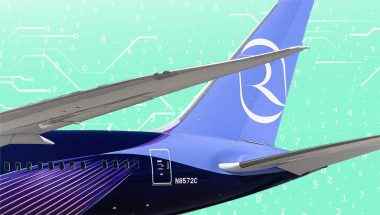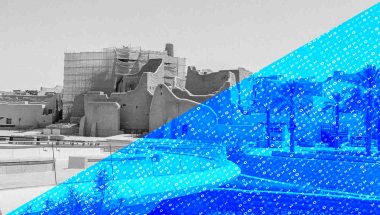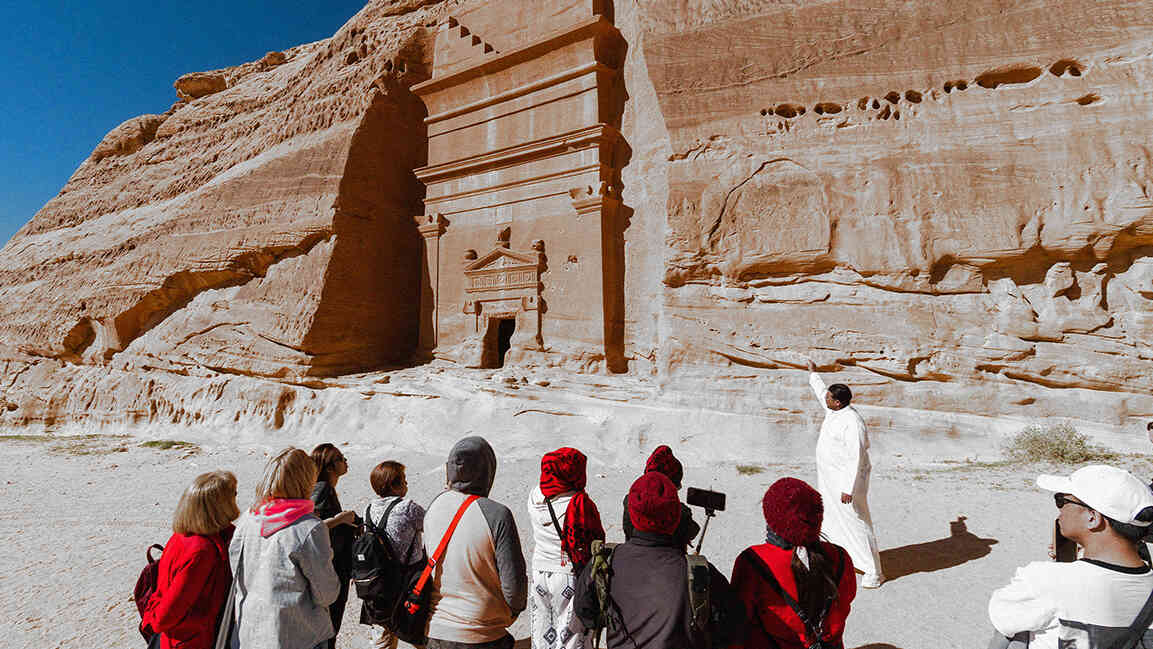- | 9:00 am
High-Speed rail can bring massive transformation. But is the Middle East rail ready?

Ask any well-traveled Arabs about their opinion regarding trains, and they will eulogize Japan’s legendary rail system. Super-fast, super-punctual, super-everything.
There’s free Wi-Fi in every station, Braille plates for travelers with disabilities, and public washrooms, shops, banks, and takeaway food outlets inside stations. Many of the trains are outfitted with TVs and are climate-controlled. Trains turn up every few minutes, sooner during peak periods.
Making cross-border operations easier, even Europe demonstrates the power of rail to connect people and businesses. It is part of the urban landscape — speeding people from one hotspot in one country to the next.
In the Middle East, urban mobility is changing rapidly with the influx of new travel modes and technologies, with plans of Hyperloop and suspended skypods. However, it is one of the few remaining regions where rail networks have yet to proliferate.
“The Middle East has an opportunity to re-invent the impact a cross-country rail network can have across economies. Having the opportunity to have freight and people moving at speed can change the way urban development and city planning gets applied,” said Moussa Beidas, Director of Ideation at PwC Middle East.
MORE ECONOMICALLY INTEGRATED REGION
Many view a high-speed rail line will transform urban mobility, meaning more accessible business meetings and a boost to the growing startup ecosystem.
“E-commerce should flourish, with transportation rates and times significantly decreasing compared to the current system of trucks and air travel, leading to a more economically integrated region. Startups working in e-commerce, logistics, and delivery will benefit immensely from the network, and we may see a new segment of D2C startups emerge to take advantage of this logistical improvement,” said Hasan Haider, Managing Partner at +VC.
Sourcing and retaining affordable tech talent has always been a challenge for startups in the region, said Beidas. “Historically, Egypt, Lebanon, and Jordan have been large contributors of human capital. Though I don’t see plans for systems to link up that far afield to the Arabian peninsula, making a rail-line a reality in the Gulf is one step closer to making travel affordable in the region.”
In the Middle East, governments understand that public transport has public benefits beyond the direct services to riders. Plans have been made to identify and pay for such benefits as reduced pollution, congestion, and better safety.
An efficient, tech-driven rail network is a vital need. It can offer a much more efficient mode of transport for goods and people movement around the region, according to Mama Sougoufara, Managing Director MENAT Alstom. Urban transport specialist Alstom developed the Dubai Tram and worked on Dubai Metro and stage one of Etihad Rail’s signaling.
“The Middle East has experienced rapid economic development coupled with the rise in urban development in recent years. This development can only be sustained by resilient and modern transport infrastructure. For this purpose, the Middle East must develop and address the demand for affordable and reliable public transport systems, especially for those that have no access to cars.”
“At a regional level, a robust and interconnected transport network will firmly position the Middle East as a business leader,” added Sougoufara.
On the right track, the Etihad Rail project in the UAE, when complete, will stretch about 1,200 kilometers across the UAE, with plans to eventually form a vital part of the Gulf Cooperation Council (GCC) railway network passenger travel, connecting the seven emirates to the five neighboring Gulf nations.
Currently focused on freight, the rail project launched in 2009 and had its stage one operational in 2016 – spanning 264 kilometers. In stage two of the project, more than 600 kilometers of the additional track will be laid down from Ghuweifat at the border with Saudi Arabia to Fujairah on the east coast.
DELAYED GCC RAIL NETWORK
More than 15 years ago, a $15 billion train project connecting GCC states was announced, a 1,350-mile-long rail network linking Saudi Arabia to the UAE, Oman, Bahrain, and Kuwait. Over a dozen technical agreements were made to cover the railway network’s design, building, and operational aspects. Still, not much progress has been made to the project, initially slated for completion at the end of 2018.
Oman and Kuwait have nothing complete yet, and Bahrain is still talking about it. According to reports, talks are underway between Qatar and Saudi Arabia to connect it to the GCC rail network.
According to Joseph Kéchichian, a political scientist and a senior fellow at King Faisal Center for Research and Islamic Studies, Riyadh, there are several reasons for delays, including financial constraints and pandemic-related lapses.
Low crude prices have destabilized Gulf economies and delayed investments in megaprojects. Adding further pressure is the pandemic-induced economic downturn. “As we return to normalcy, the pace should pick up. But the plan to get it done by 2023 might not materialize. Realistically, it will probably be completed around 2030. We should remember that mammoth projects take time,” said Kéchichian.
Looking at the issue slightly differently, Karen E. Young, Senior Fellow, Director of the Program on Economics and Energy at the Middle East Institute, said the challenge has not been in the “traditional financing” of the project. “It’s the cohesion among the sovereign parties and prioritization of the project. The GCC stumbled on cohesive economic policy cohesion for some time, and this project is, in many ways, an example of that.”
MYRIAD CHALLENGES
Conflicts in the Middle East also caused many interruptions in rail networks in the region, which continue to this day, and the rise of air travel made the restoration of the direct rail link less important. The Taurus Express, made famous by Agatha Christie’s Murder on the Orient Express, connected Istanbul to Aleppo (Syria) and Tripoli (Lebanon), now operates daily only between Konya and Adana in Turkey.
For the larger MENA region, high-speed rail could be transformative in more efficient transport and linkages, but, Young says, there is no momentum for that right now.
“State investors have focused more on airport development and national airlines, so rail has not been a transport priority. What we do see is interest from Arab regional organizations to focus on e-mobility and the idea of electrification in the transport sector in both personal vehicles and public transport, as a growth catalyst and as a mechanism to promote climate adaptation policy.”
According to experts, rail connectivity in the region will facilitate the opening of new markets, attract investors from other countries, and support industries in the Gulf by increasing the movement of goods between the countries.
The Gulf Railway is a means to enhance trade and economic integration, said Kéchichian. However, it requires that Saudi Arabia complete its domestic network first to open up the vast market that it represents for the other GCC member-states.
“Now that Riyadh has embarked on establishing nearly 4,000 kilometers of rail across the country, Gulf Railway, when completed, will dramatically improve conditions on the Arabian Peninsula.”
“The Kingdom’s 660 kilometers of the Gulf Railway system will only make sense if its domestic networks are up and running both to export its products to the other GCC states as well as import from them. The approximately 2,100 kilometers system will be completed but probably after a few delays,” added Kéchichian.
Even Egypt is pursuing a massive expansion, including the world’s largest monorail and new lines to Libya, Sudan, and Saudi Arabia. But there are myriad challenges in implementing rail networks.
Firstly, public infrastructures are costly, said Sougoufara. “This includes complex approval and financing processes. Another issue is red tape – often, government processes take time to implement.
“Once the plan is greenlit, the next challenge is to make space. Existing road infrastructure, bridges, and interchanges all pose a problem and must be navigated to make room for new trains and railway networks.”
“Lastly, the building process must ensure the safety and security of the people who will utilize the infrastructure. The development of a rail network requires improved navigation, flawless accident-avoidance systems, and dealing with weight in congestion. This takes time.”
In the region’s booming cities – Dubai, Riyadh, and Doha – trips can be made by cars and buses, and short-haul flights, both are not easy and hassle-free. But reliable high-speed trains could ease the transportation woes, especially in the Lower Gulf region and between Qatar and Bahrain and between the latter two with the eastern province of Saudi Arabia, said Kéchichian. “Trips from Kuwait to Muscat or from Jeddah to Dubai will be faster by plane, but one from Doha to Abu Dhabi might be less time-consuming by rail.”
ENERGY-EFFICIENT TRAVEL
Rail is one of the more energy-efficient forms of travel. With cities in the region getting bigger and more congested, it’s about time to have the most cost-effective and least polluting mode of transportation. An efficient and tech-driven rail network will support the region’s drive to meet sustainability goals, especially as UAE and Egypt gear to host COP conferences. “Introducing cutting-edge technology such as alternative energy solutions, smart mobility centers, and improved navigation software can mitigate carbon footprint and reduce some of the biggest transportation issues – traffic congestion,” said Sougoufara.
Echoing the same sentiment, Beidas said, “Trains provide an alternative to those looking to commute between cities. Like Dubai and Abu Dhabi, and Sharjah, and opportunities for high-speed rail between the UAE and KSA. Reducing the level of emission caused by both those scenarios can positively impact the environment in the long term for multiple economies in the region.”
Urban mobility is undergoing an unprecedented evolution, and the cross-country Taurus Express and GCC Railway, and with them, the Middle Eastern dream, may soon ride the railways again.
“Not so soon,” said Kéchichian. “Realistically, we are looking at late 2028-early 2030 for GCC rail completion.”








































